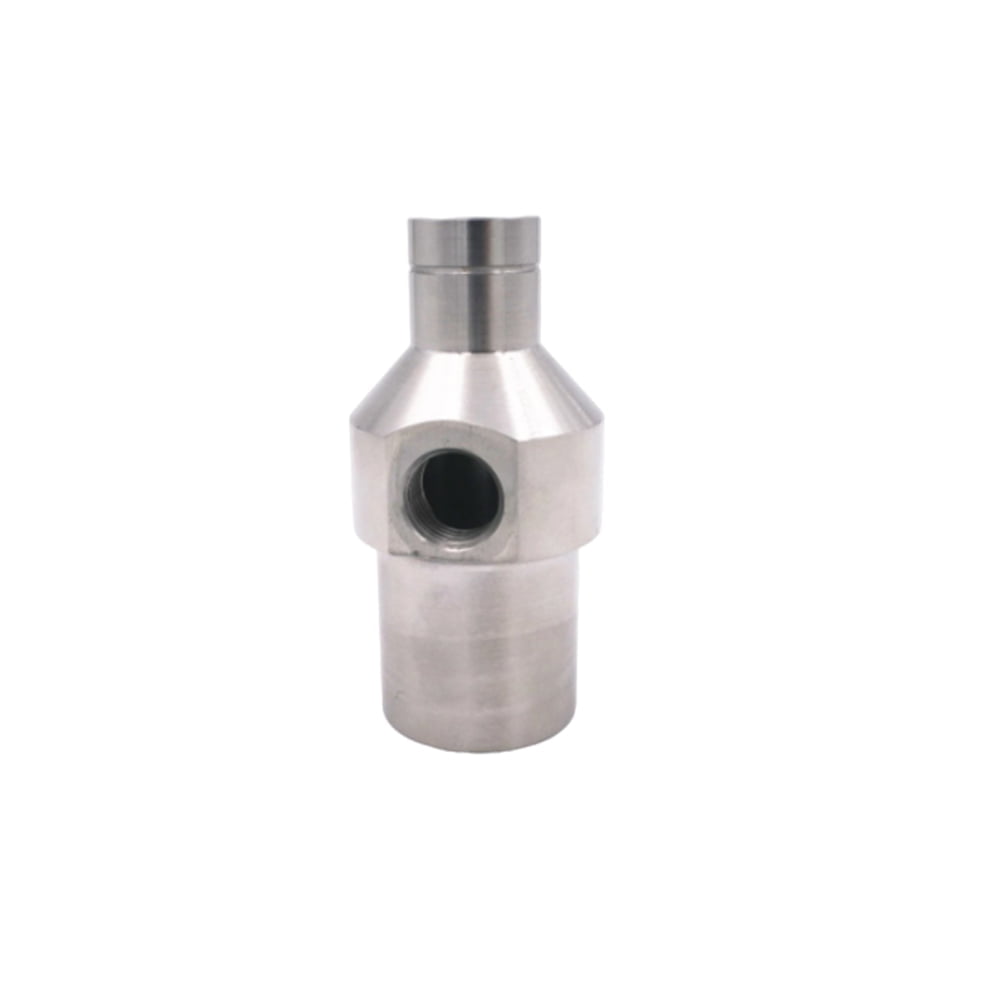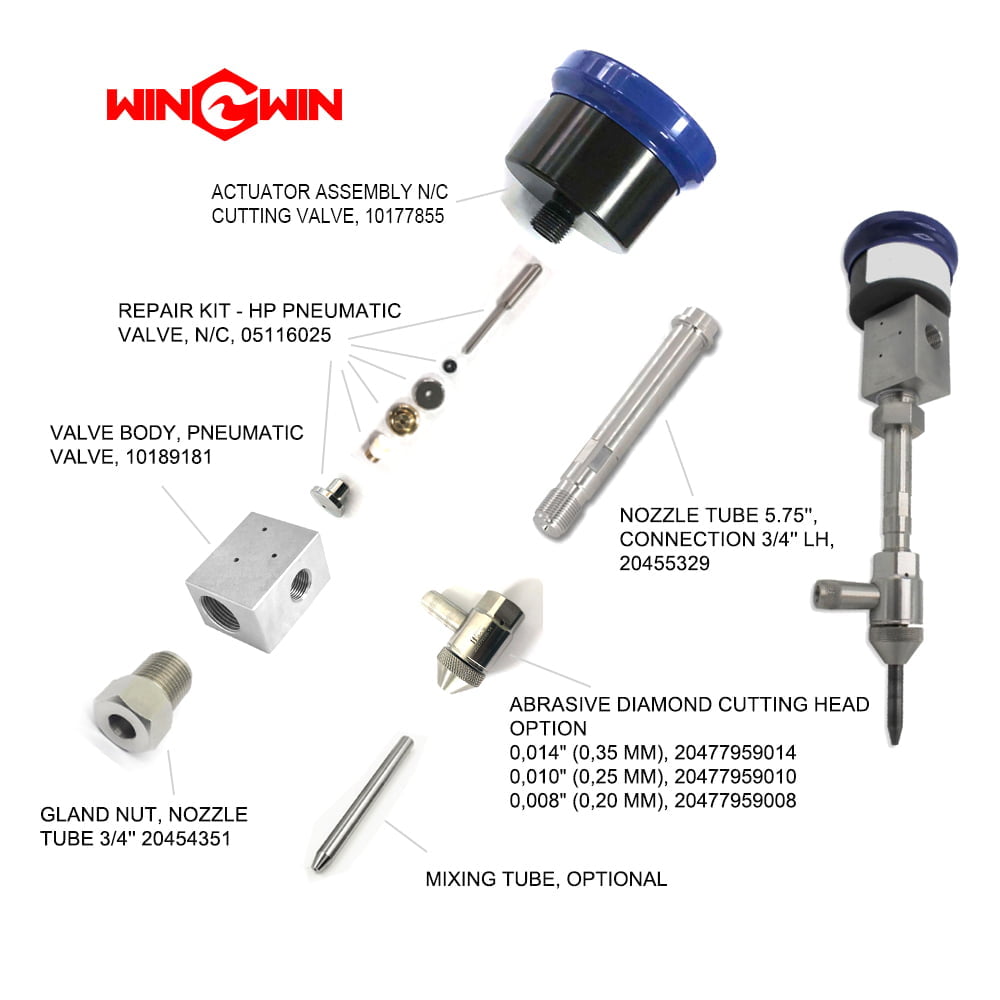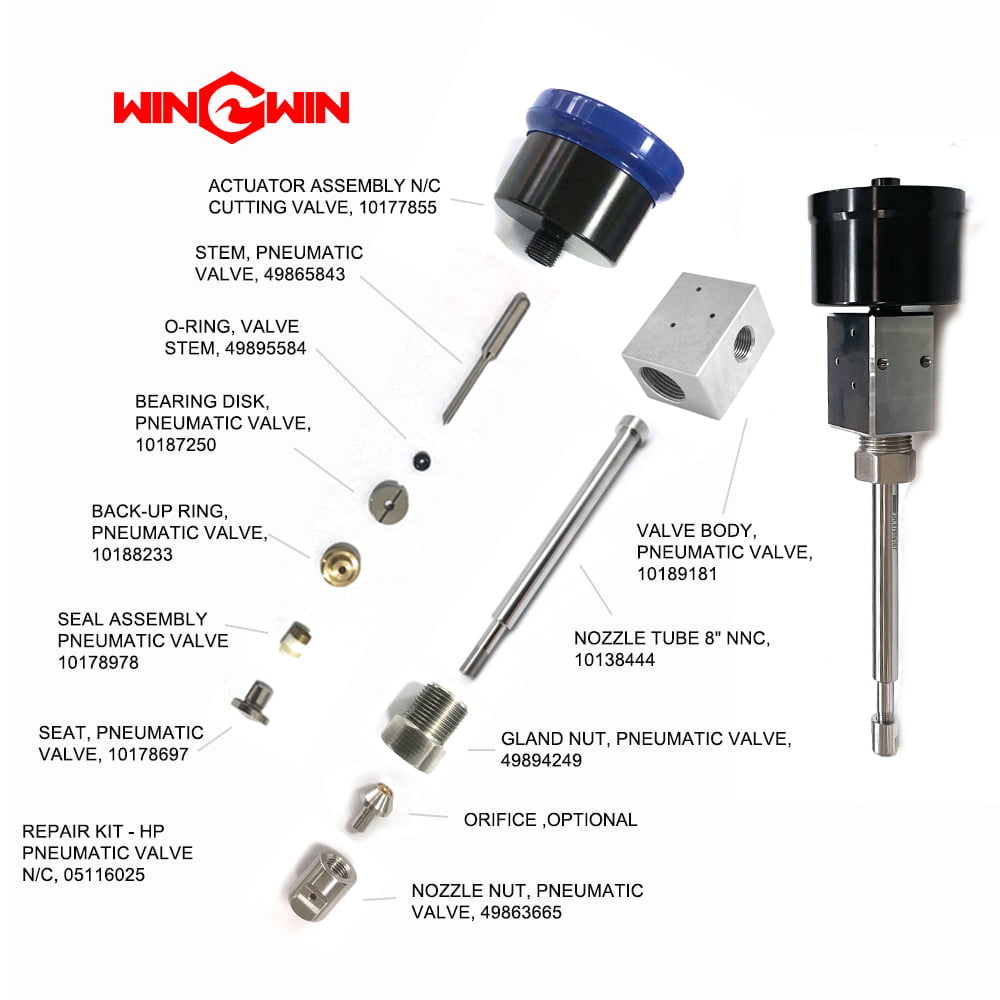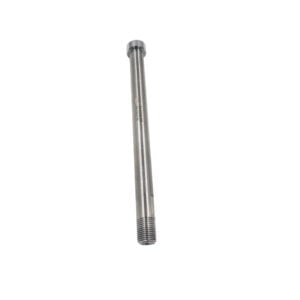Description
Waterjet cutting head spares Cap
Item number: 05076971
Description: used on the autoline I cutting head


FAQ of waterjet cutting technology – What types of waterjet cutting heads are there, and what materials can be cut?
The waterjet head is an important part of the waterjet. Its function is to mix the high-pressure water flow with the abrasive and pass through a nozzle of a certain shape to form a high-speed, high-energy water jet to cut the material.
The main types of water jet cutter head are as follows:
Pre-mixed waterjet cutting head: Before the high-pressure water enters the nozzle, it is mixed with the abrasive, and then passes through the nozzle to form a water jet. The advantage of this kind of waterjet head is that it is simple in structure and easy to adjust the amount of abrasive, but the disadvantage is that the abrasive wears on the nozzle more and the life of the nozzle is shorter.
Post-mixing water jet cutter head: After the high-pressure water flow passes through the nozzle to form a water jet, it is mixed with the abrasive. The advantage of this kind of waterjet head is that the abrasive has less wear on the nozzle and the nozzle has a longer life. The disadvantage is that with this structure is complicated and it is difficult to adjust the amount of abrasives.
Composite waterjet cutting head: Before the high-pressure water flow enters the nozzle, it is mixed with part of the abrasive, and then mixed with the remaining abrasive at the outlet of the nozzle. The advantage of this kind of waterjet head is that it has the advantages of both pre-mixing and post-mixing. The disadvantage of this structure is the most complicated and the cost is the highest.
You almost can use the waterjet cutting head to cut any materials. According to different material properties and requirements, different abrasives and parameters can be selected.
The materials that waterjet can cut mainly include the following categories:
Metal materials: such as steel, aluminum, copper, titanium, nickel and other metals and alloys, as well as metal composite materials, etc.
Non-metallic materials: various hard materials such as glass, ceramics, marble, granite, etc., and various soft materials such as rubber, plastic, foam, paper, etc.
Special materials: such as low melting point and flammable and explosive materials, such as gunpowder, fuse, etc.; and sensitive and active materials, such as semiconductors, biological tissues, etc.






